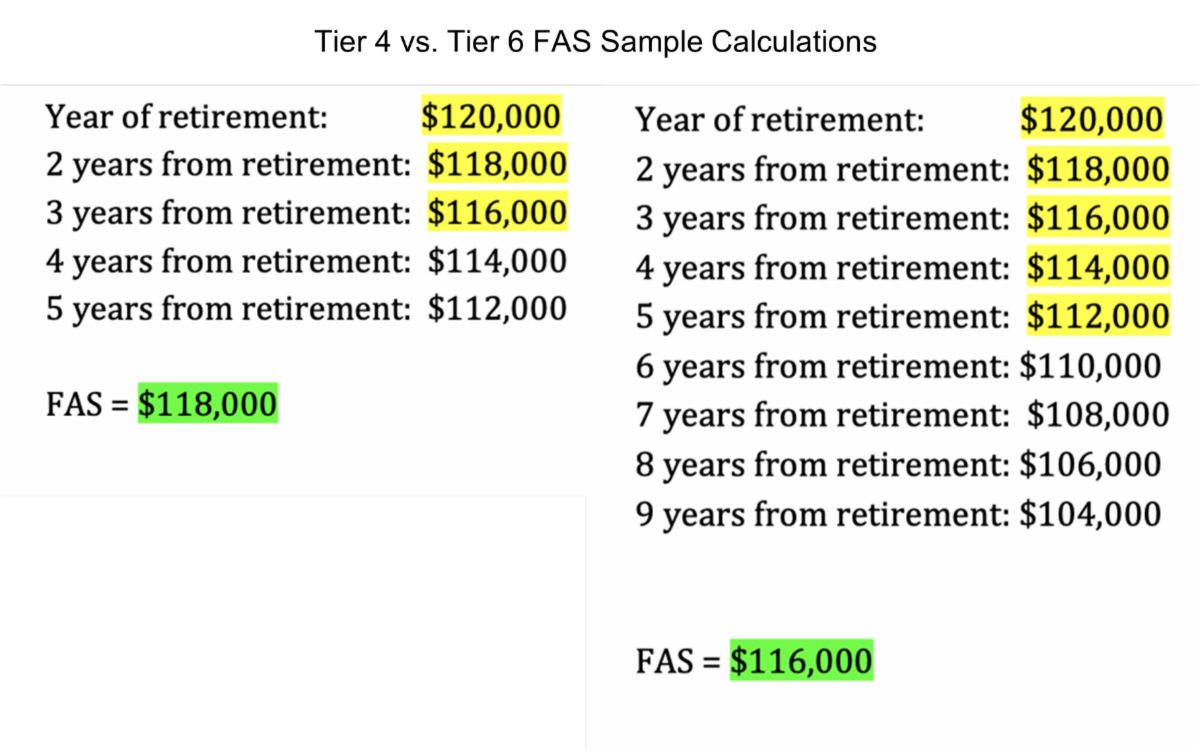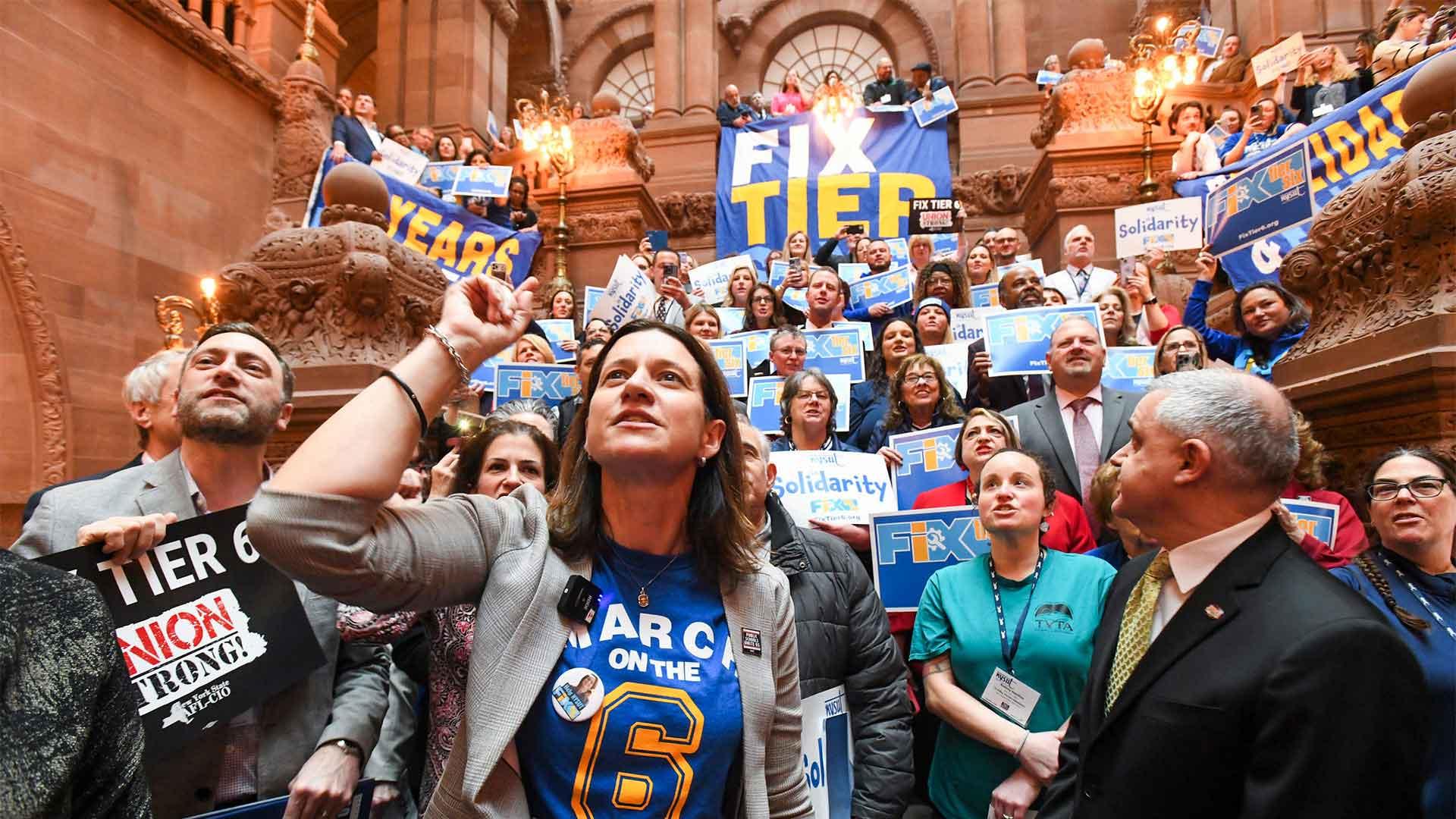Posted:
Thursday, March 7, 2024
A Message from Linda Waldbaum Newsletter Editor
What is the difference between April 1st and Tier 6? One is known as a day for jokes, and the other is just a big joke. Twelve years ago, on April 1, 2012, former Governor Andrew Cuomo created Tier 6, which was the cruelest prank he could play on public educators across New York State. Needless to say, we are not laughing! To say Tier 6 is a new tier with reduced benefits is an understatement, and our state union NYSUT is pushing all members to help fix this atrocity. If you have not done so already, please click the following link to become part of the “Fix 6” campaign: https://fixtier6.org/
The gross inequity between Tier 4 and Tier 6 boils down to the following three items:
- Contribution Burdens
- Diminished Returns
- Extended Service Requirements
Contribution Burdens: Tier 4 members contribute a fixed 3% for a decade, whereas Tier 6 members face a lifetime of escalating contributions, ranging from 3% to 6% based on income levels. For educators on Long Island, where the cost of living is notably higher, this discrepancy hits particularly hard. Over a 30-year career, a Tier 4 educator may contribute around $25,000, while their Tier 6 counterpart could shell out a staggering $200,000. This disparity not only strains educators' finances but also jeopardizes their future financial security.
Diminished Returns: Despite pouring significantly more into the pension system, Tier 6 members find themselves short changed when it comes time to reap the rewards. The calculation of the Final Average Salary (FAS) is a primary culprit. Unlike Tier 4, which bases FAS on three consecutive years, Tier 6 extends this period to five years. Additionally, the inclusion of lower-earning years and stricter caps on salary increases further erode Tier 6 members' pension earnings. It's a bitter pill to swallow for educators who dedicate their lives to shaping the future. The table below compares two educators who both retire with the same final salaries but different FAS calculations.

Extended Service Requirements: Tier 6 members face an uphill battle towards retirement. While Tier 4 educators can retire at 55 with 30 years of service and receive their full pension, Tier 6 members must teach until 63 to enjoy the same benefit. Even at 60, they'd only receive 80.5% of their pension—a stark contrast to Tier 4's full benefits. This prolonged tenure exacts a heavy toll, both financially and personally, on educators who deserve better. Tier 6 members will contribute hundreds of thousands of dollars more into their pension, take home fewer dollars in their pension, and work about ten years longer than their Tier 4 colleagues. If you didn’t already know it, Tier 6 sucks!
As dismal as Tier 6 appears, there is hope for change. In 2022, the vesting period for Tier 6 dropped from 10 to 5 years. Overnight, approximately 80,000 members became vested, which guarantees them a pension when they stop working and satisfy the age requirements for their tier. The next two big reforms the Fix-Six campaign will focus on are lowering the retirement age and changing the FAS calculation to close the gap in benefits between tiers.
How can we help in this endeavor? First, sign up for the Fix-Six campaign (https://fixtier6.org/). Second, contribute to VOTE-COPE. There is power in numbers. By joining the Fix-Six campaign, you will be notified when NYSUT needs our help contacting NYS Assemblyman and Senate members who will be deciding on the future of Tier 6. Politicians are swayed by voters, and NYSUT has the numbers to influence change if we all are on board. There is also power in money. It takes money to lobby for change, and that is where our VOTE-COPE dollars will go. Five dollars a paycheck can result in hundreds of thousands of income back in your pocket over a career.
By standing together, educators can reclaim their rights and ensure a fair and equitable future for all. It's time to turn the tables on Tier 6 and rewrite the narrative—one that's built on justice, fairness, and respect for those who dedicate their lives to educating the next generation of children. In solidarity.
Found in:

